fall inside a hole
Stelco Junior Express Set 4545 (~1979)
First written November 20, 2023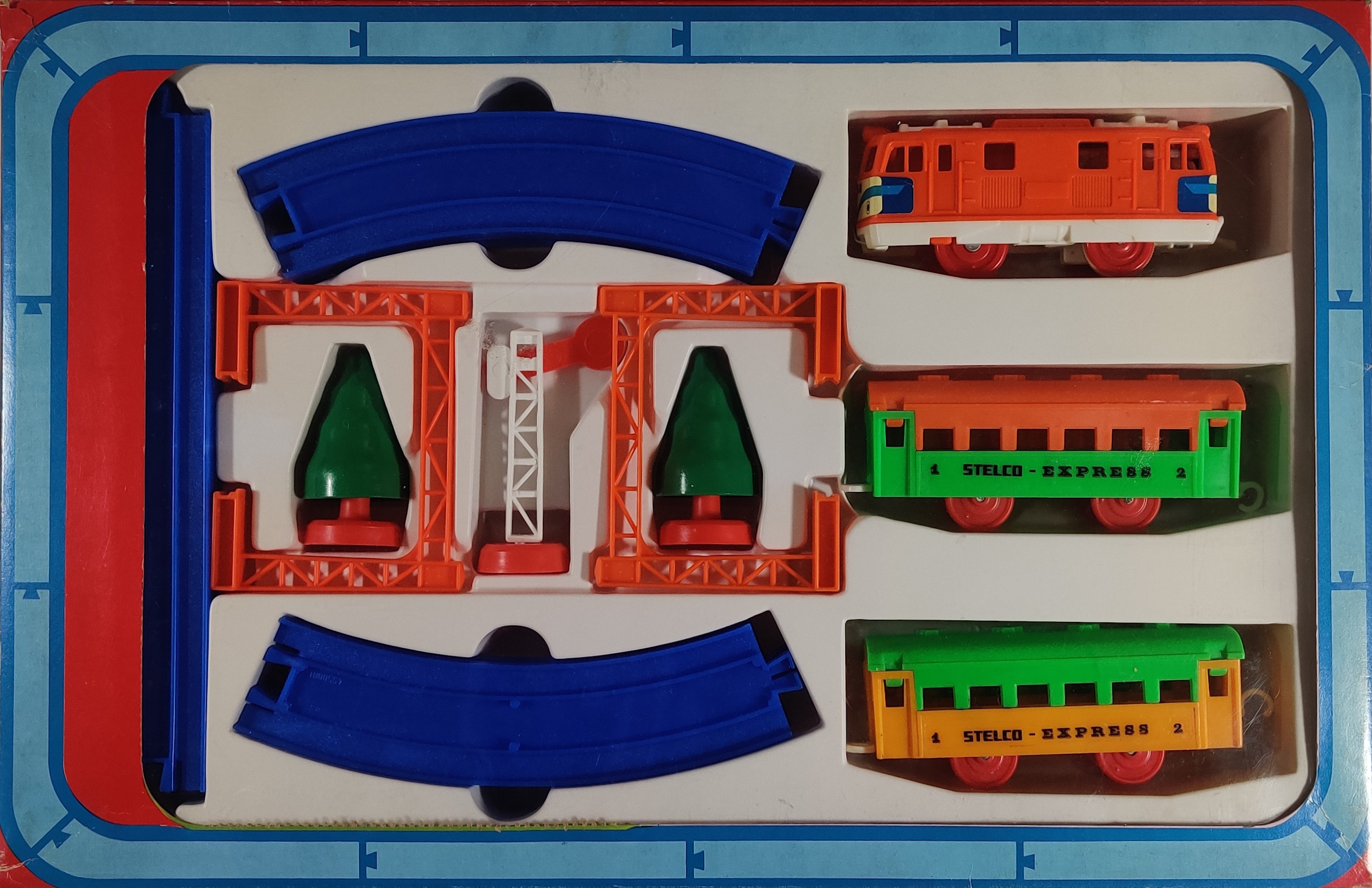
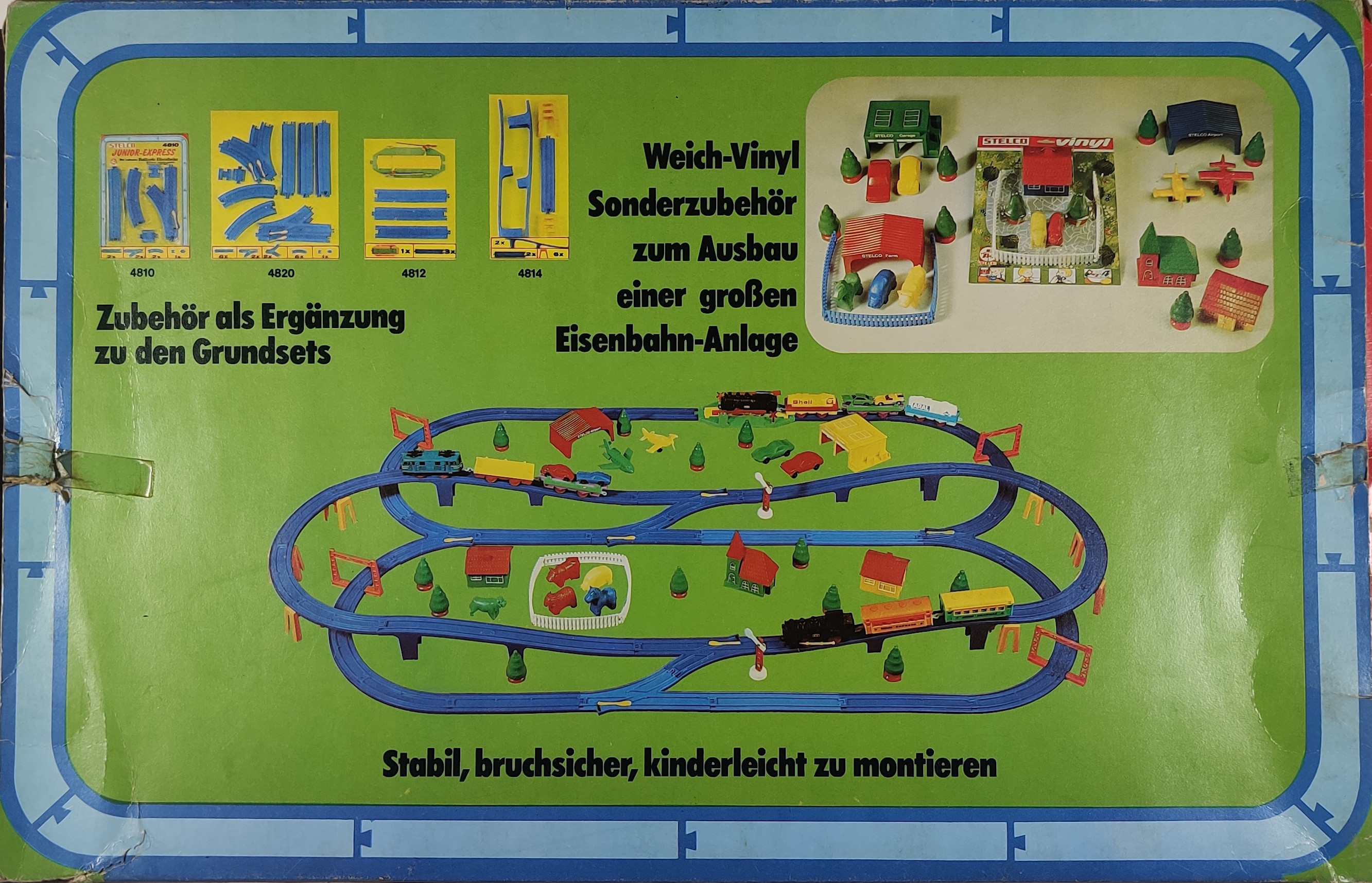
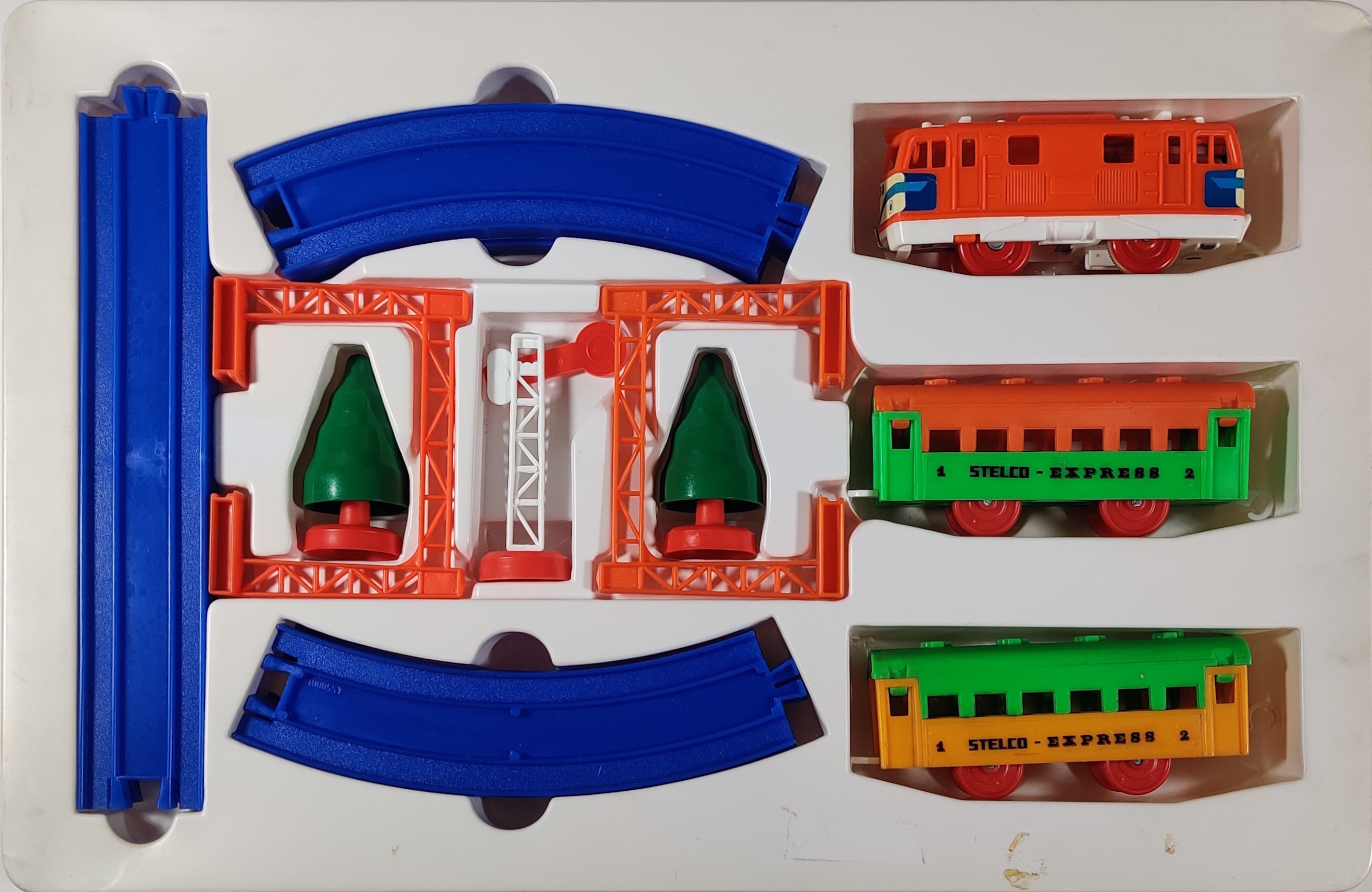
The Stelco Junior Express set 4545 is a small West German-market set that combines a recolored Tomy-made EF58 electric locomotive with rails, carriages, and accessories produced locally by Stelco. This set appears in the 1979/1980 Stelco catalogue. Stelco Junior Express boxes have a lightweight cardboard outer box and an internal vacuformed tray to hold components.




This smaller style of box seems to have been used for both this set and the similar 4550 set with C12, passenger cars, and railroad crossing with oval of track. The box shows photos of a set similar to the 4550 but with original Plarail components instead of the Stelco-produced accessories these sets came with. The layout on the back of the box has a mix of Stelco and Plarail produced track and advertises both the Junior Express track packs and some of Stelco's soft vinyl toys. The top and bottom sides show battery information for the EF58 and C12, seemingly the only two locomotives used in Junior Express sets. The front of the box has perforations around the edge of the viewing window that imply there as a version of this box with a cardboard section that extended over part of the clear plastic cover. The sides of the box have a white rectangle where the set number is stamped and the right side of my box has the original price tag with the set number and original price of 19.99 deutsche marks.
Set contents
| Quantity |
Item |
Photo |
|---|---|---|
| 3 pieces |
Orange
EF58 electric
locomotive with two carriages (Stelco produced) |
 |
| 2 | Straight Rail (Stelco produced) |
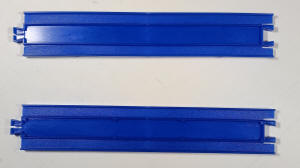 |
| 8 | Curve Rail (Stelco produced) |
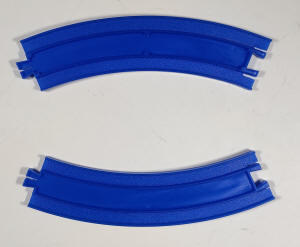 |
| 4 | Catenary
(Stelco produced) |
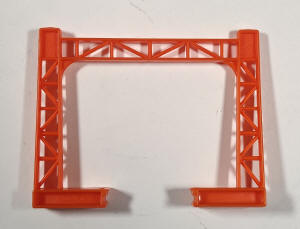 |
| 2 | Standing
Tree (Stelco produced) |
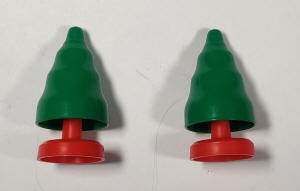 |
| 1 | Signal
(Stelco produced) |
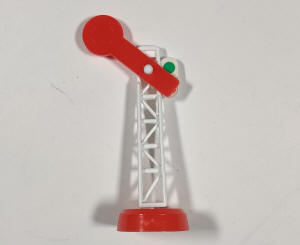 |
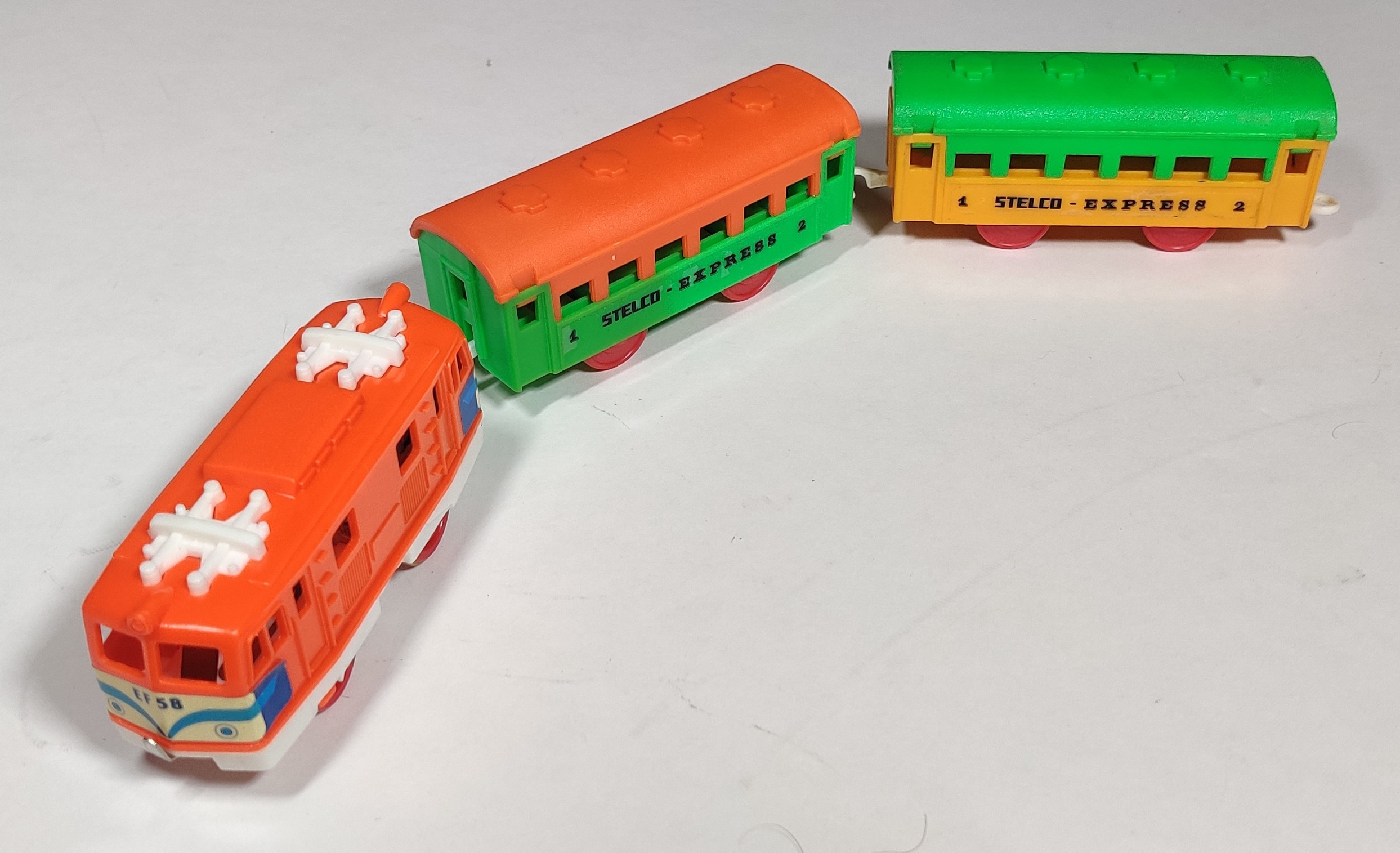
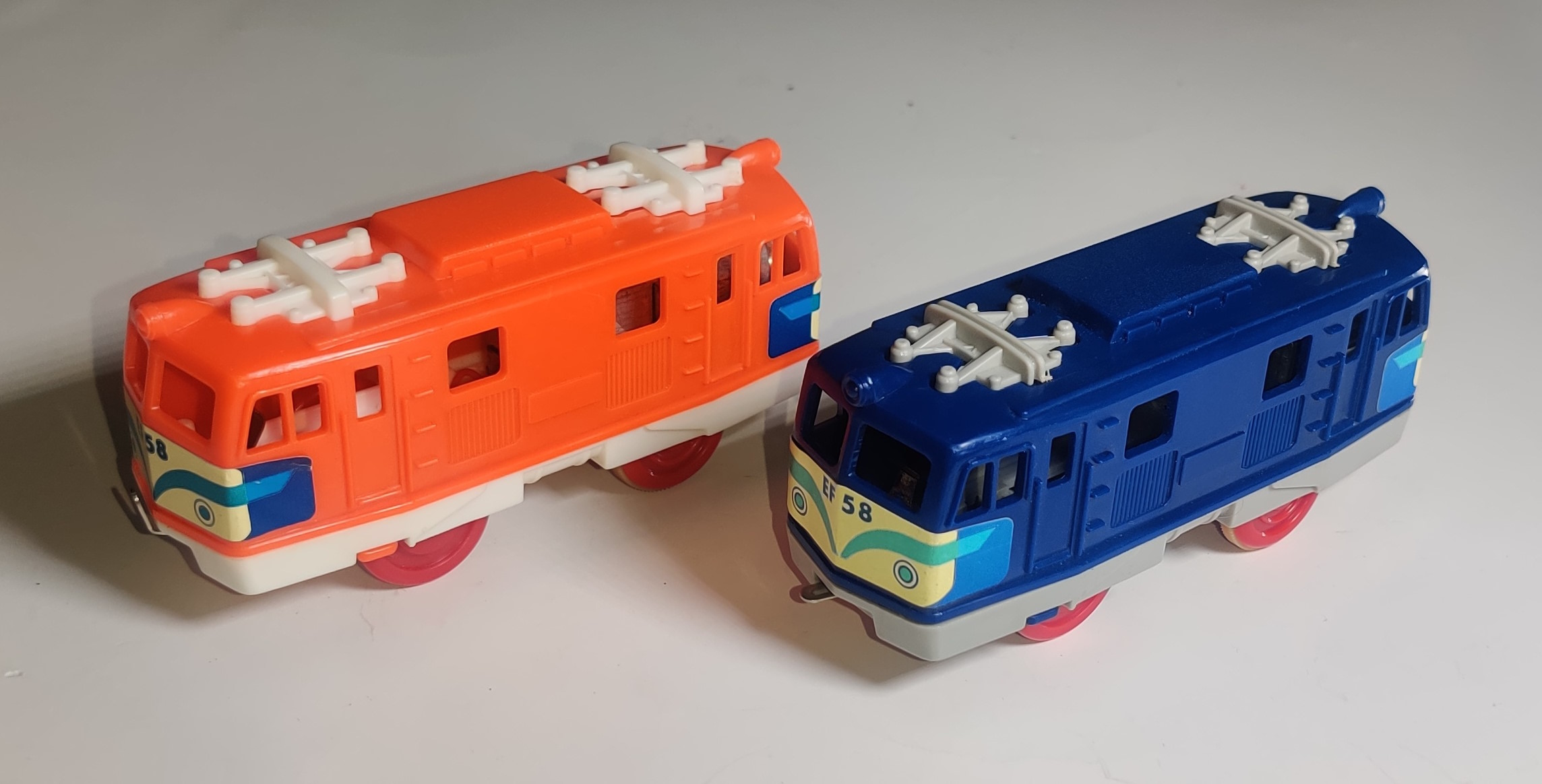
The EF 58 in this set is a bright orange color unlike the Plarail original. The front and rear stickers are the same between this and the blue Plarail EF 58. The EF 58 uses the old all-metal rim-drive gearbox mounted to a white chassis.
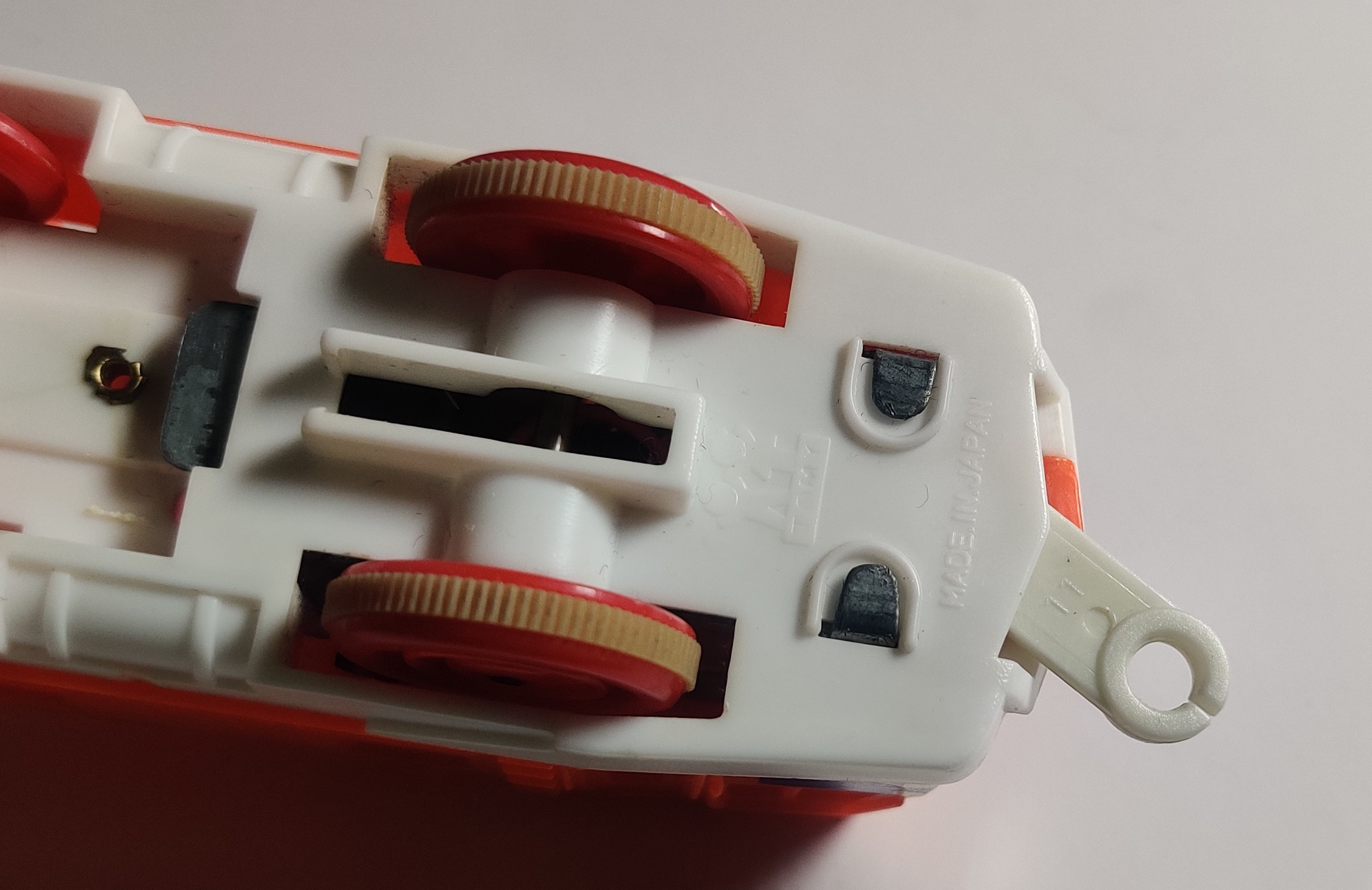
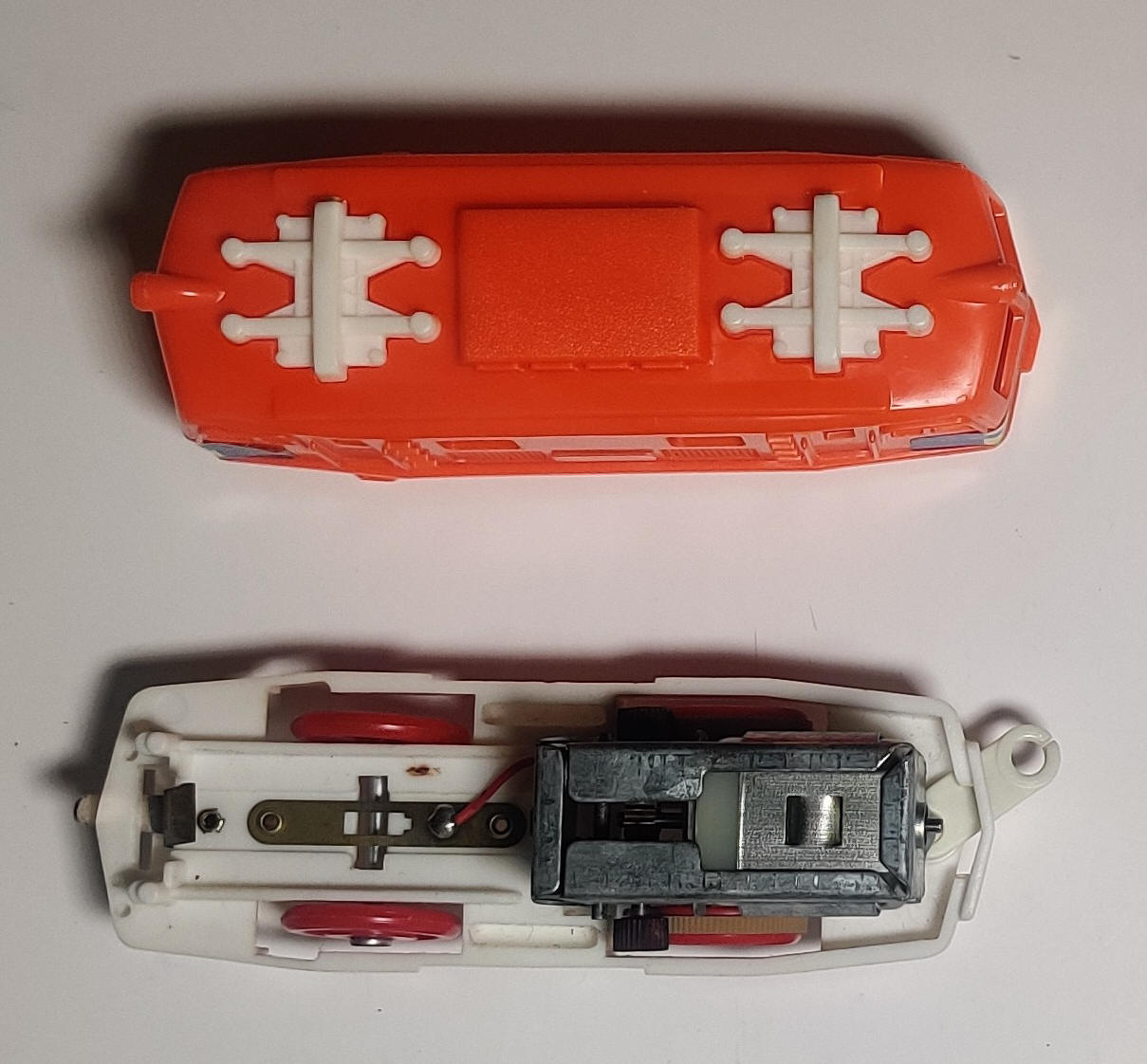
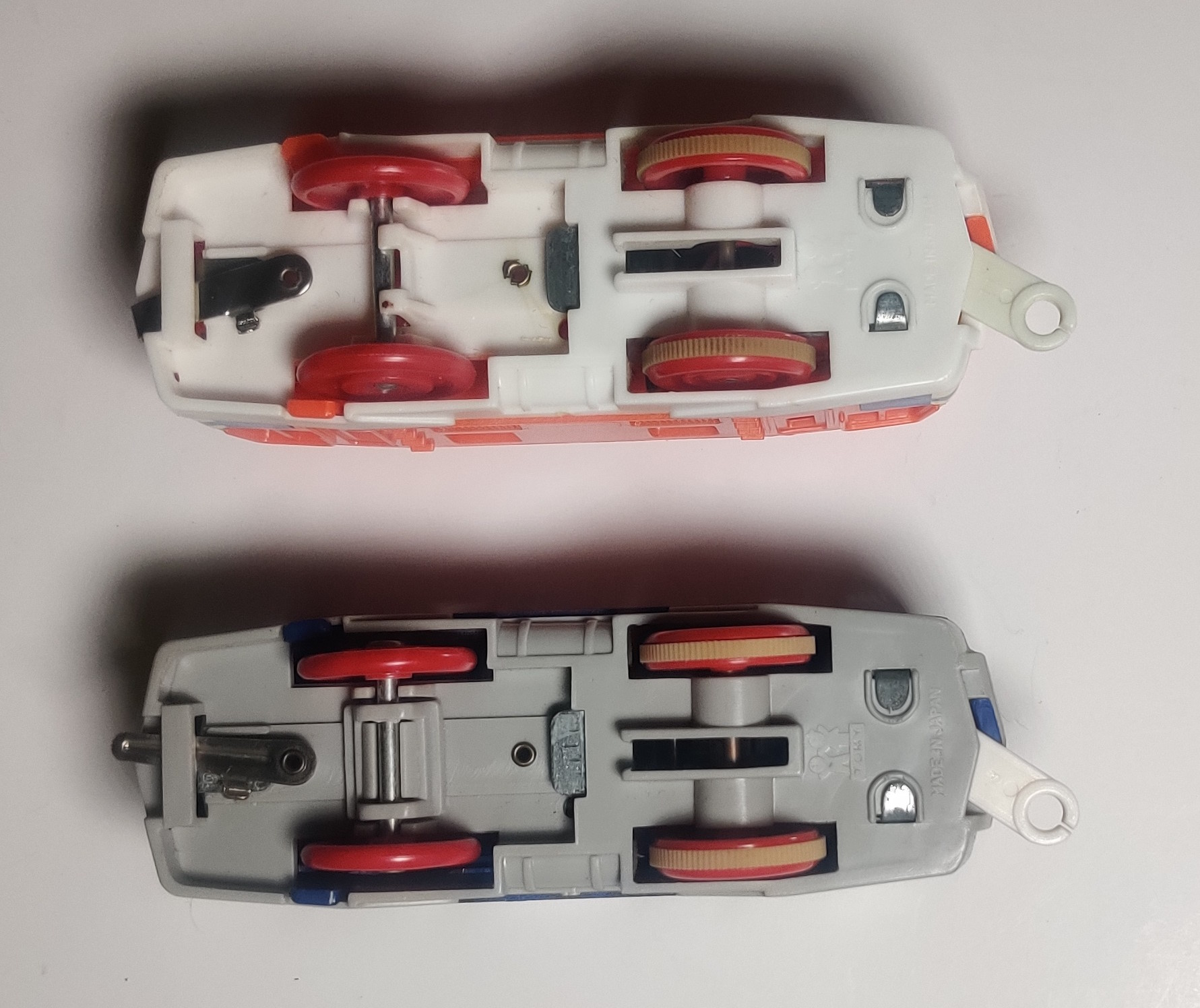
The EF58 is marked as made by Tomy with the old "boy and girl" logo and is made in Japan. It was around this time that the regular Japanese Plarail EF58 would have been updated to the more modern clipped axle holder that is less fragile.
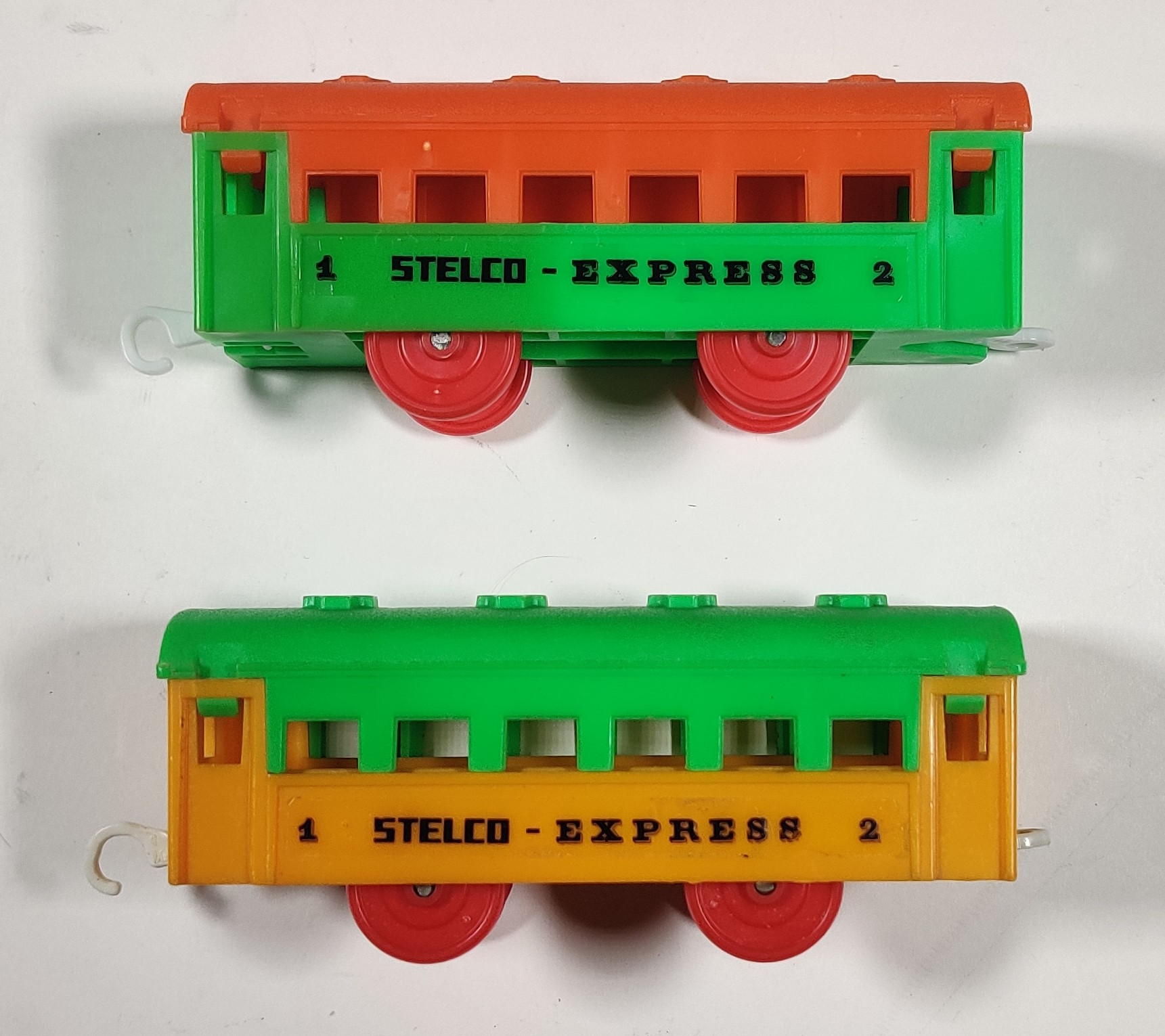
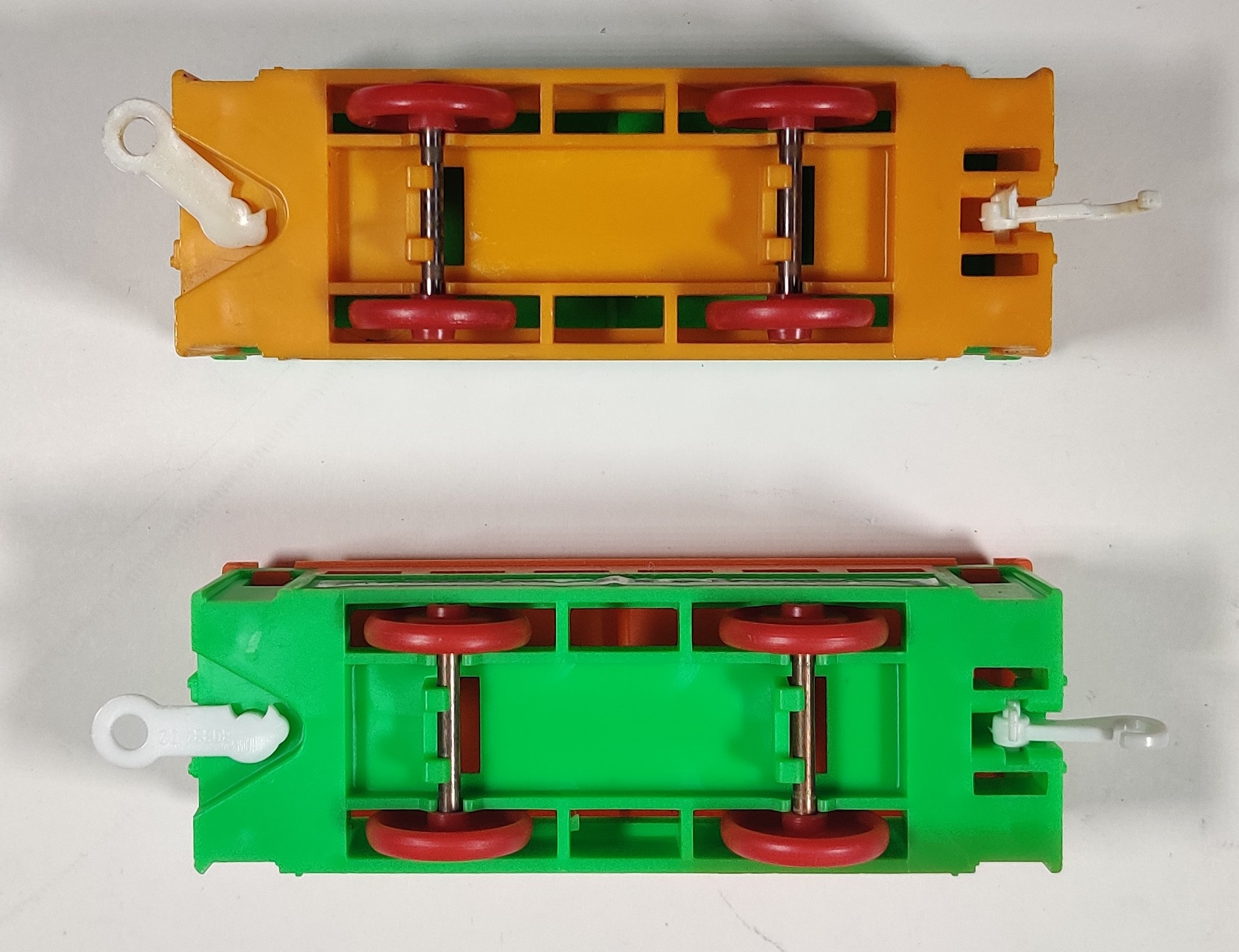
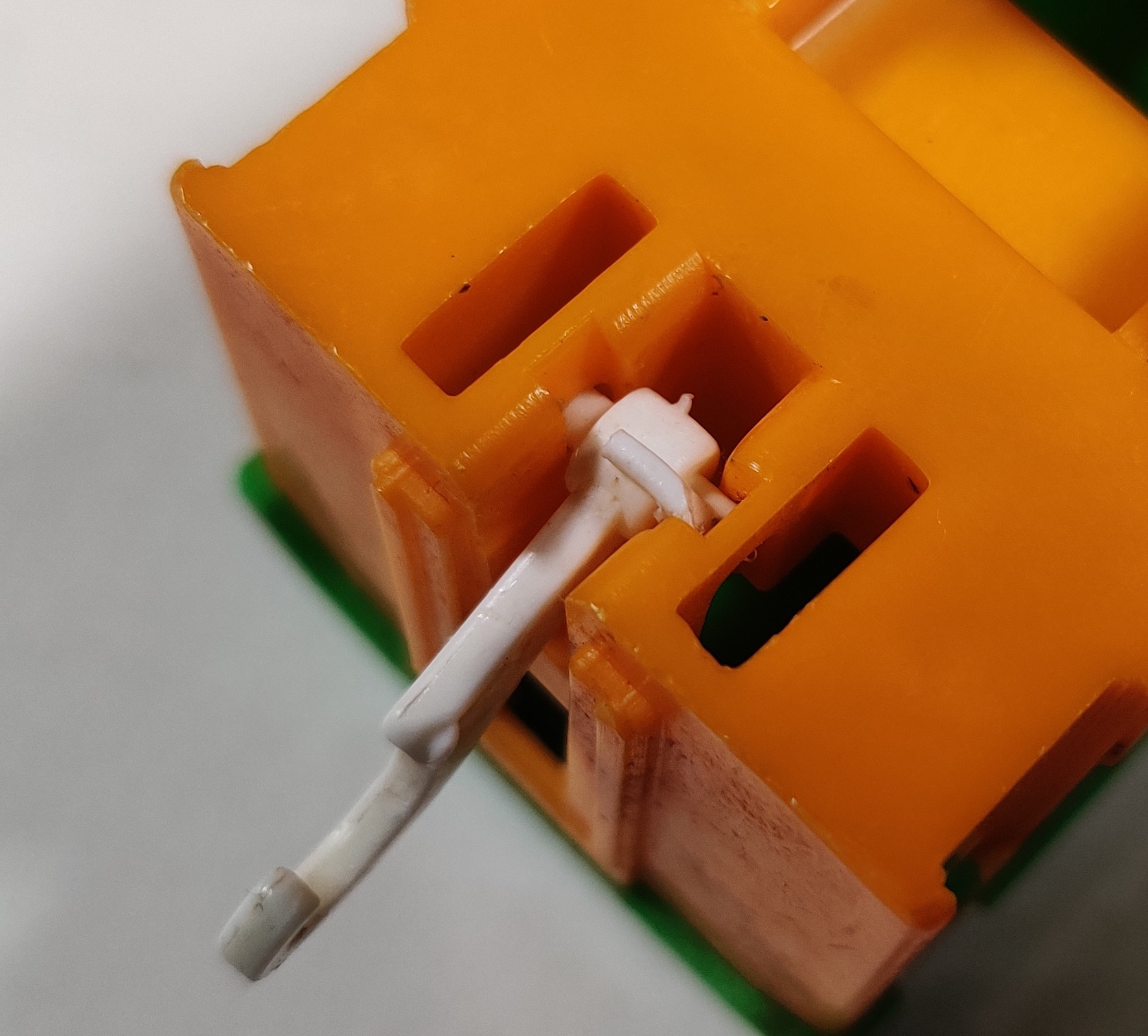
The coaches are a Stelco adaptation of an older Plarail coach design but have been retooled for Stelco production with a similar coupling system that mounts to the chassis slightly differently, with a catch on the hook side that restricts its range of motion and real couplings that clip into the bodywork instead of ringing around a plastic post like on Plarail cars. These cars are clipped together from an upper and lower piece and come in several color combinations.
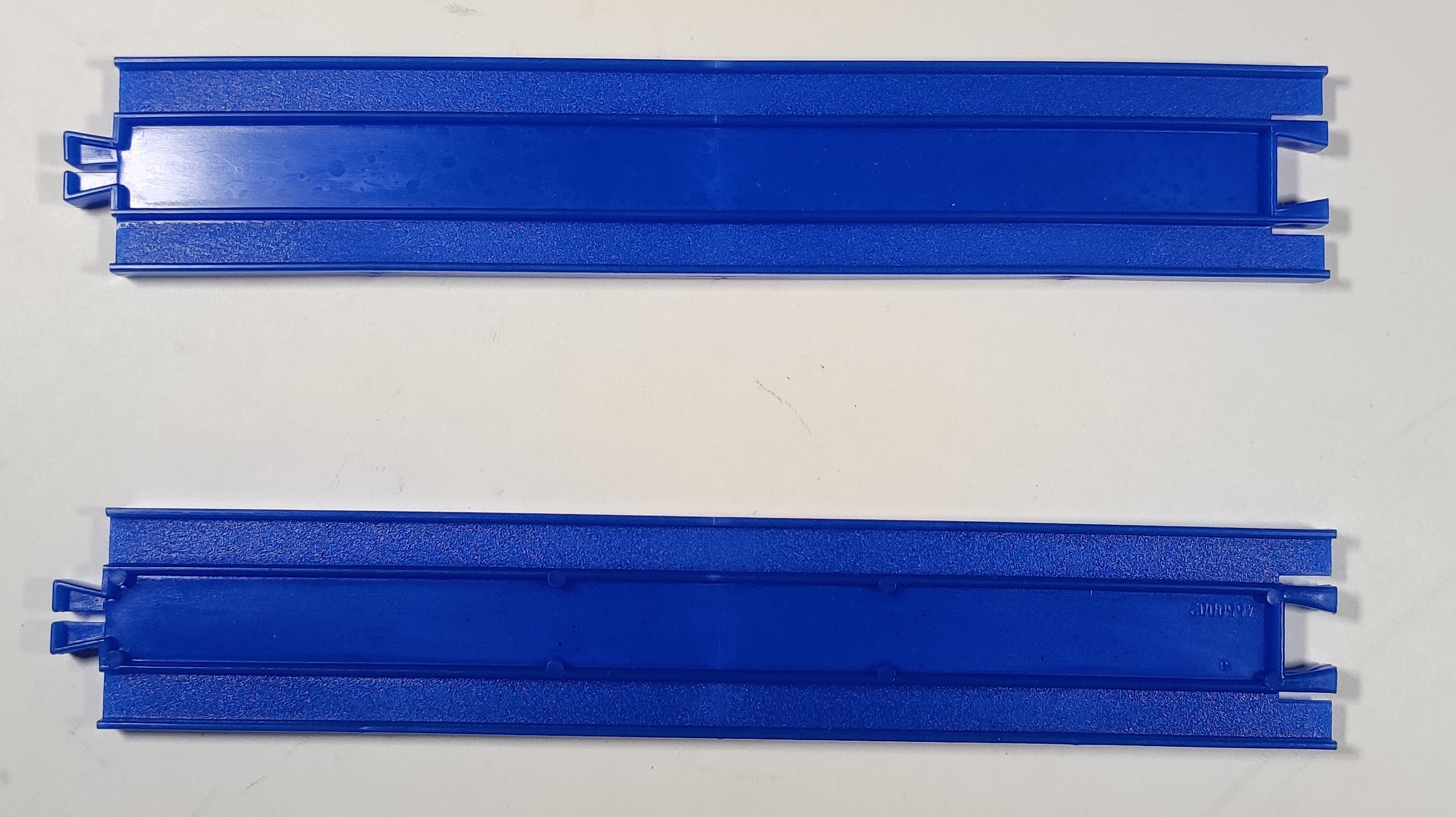
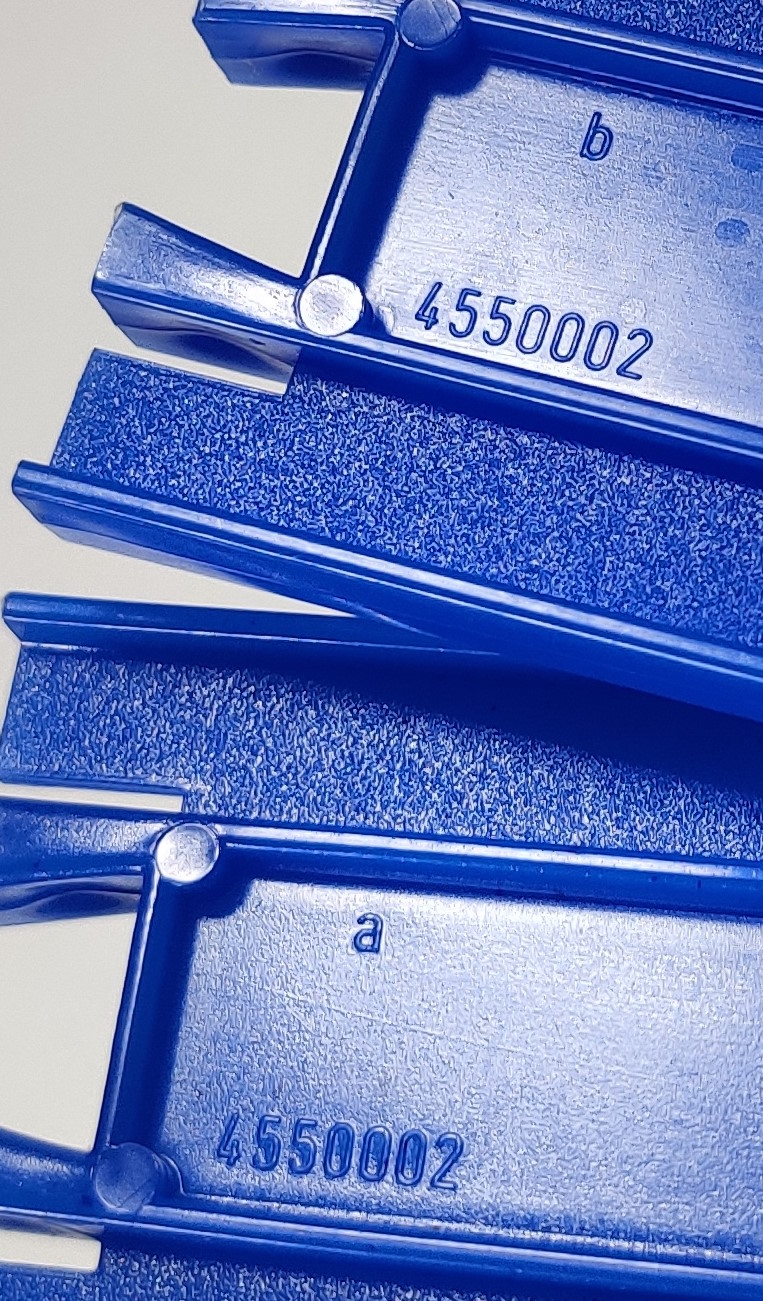
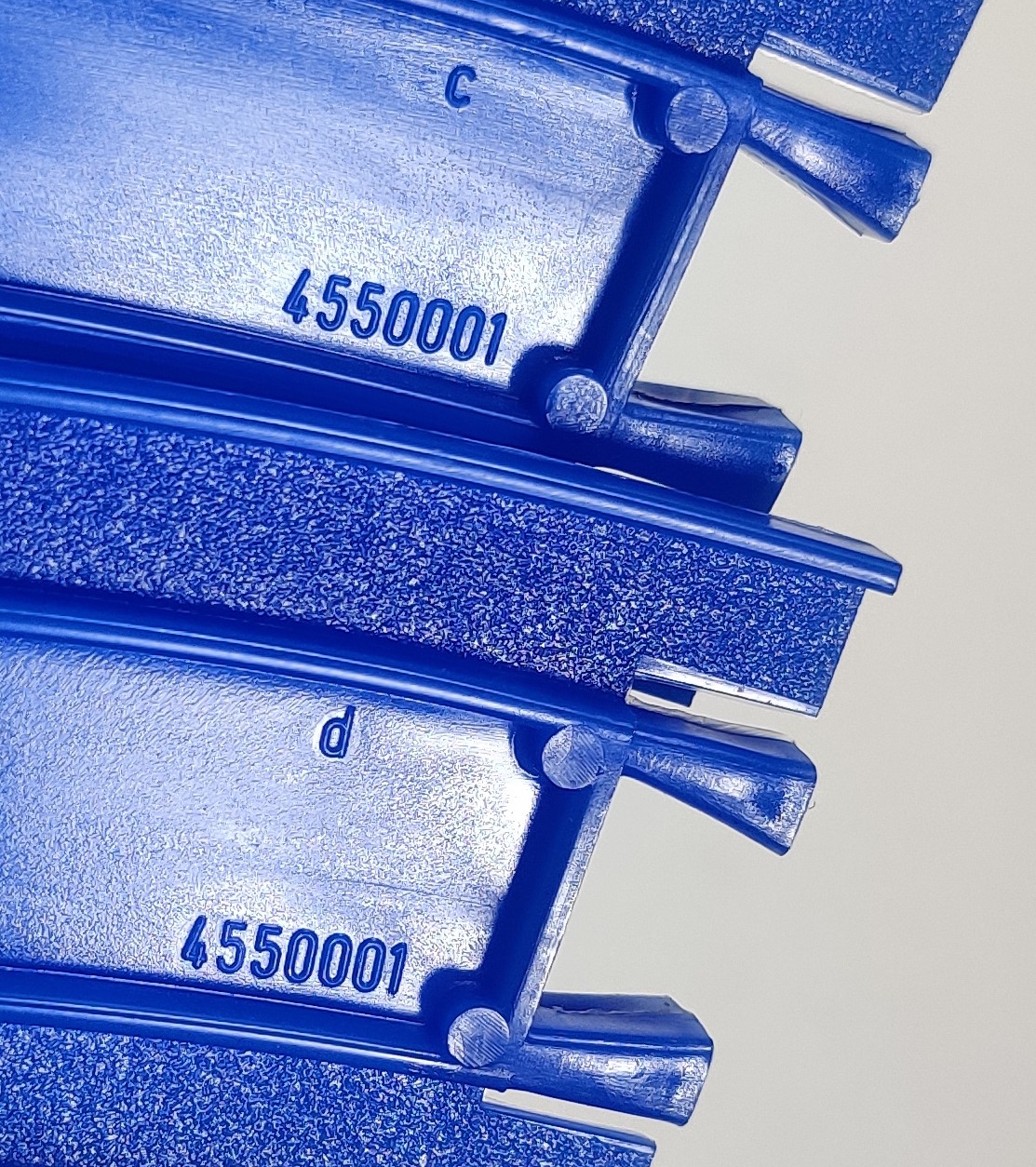
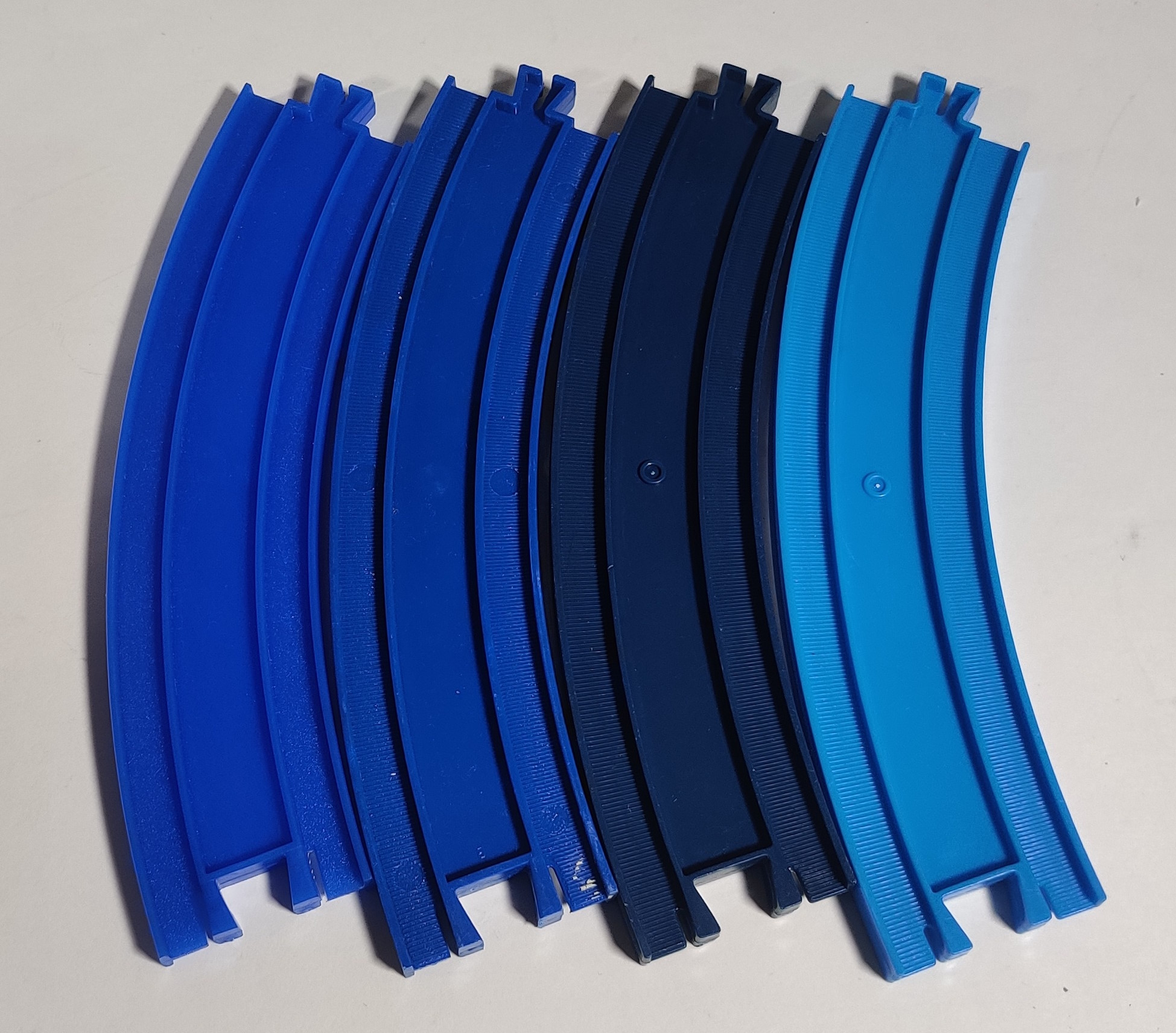
All of the track in this set is made by Stelco in West Germany, although the rails used in my copy of the set are not the variety that are marked W. Germany. The rails are marked with molding slot letters as well as seemingly a product code. Rails are roughtop as Plarail would have been at the time and are a lighter blue than the Mickey Mouse Plarail or Tomy Express/Tomy Train dark blue rails but are darker than normal Plarails.
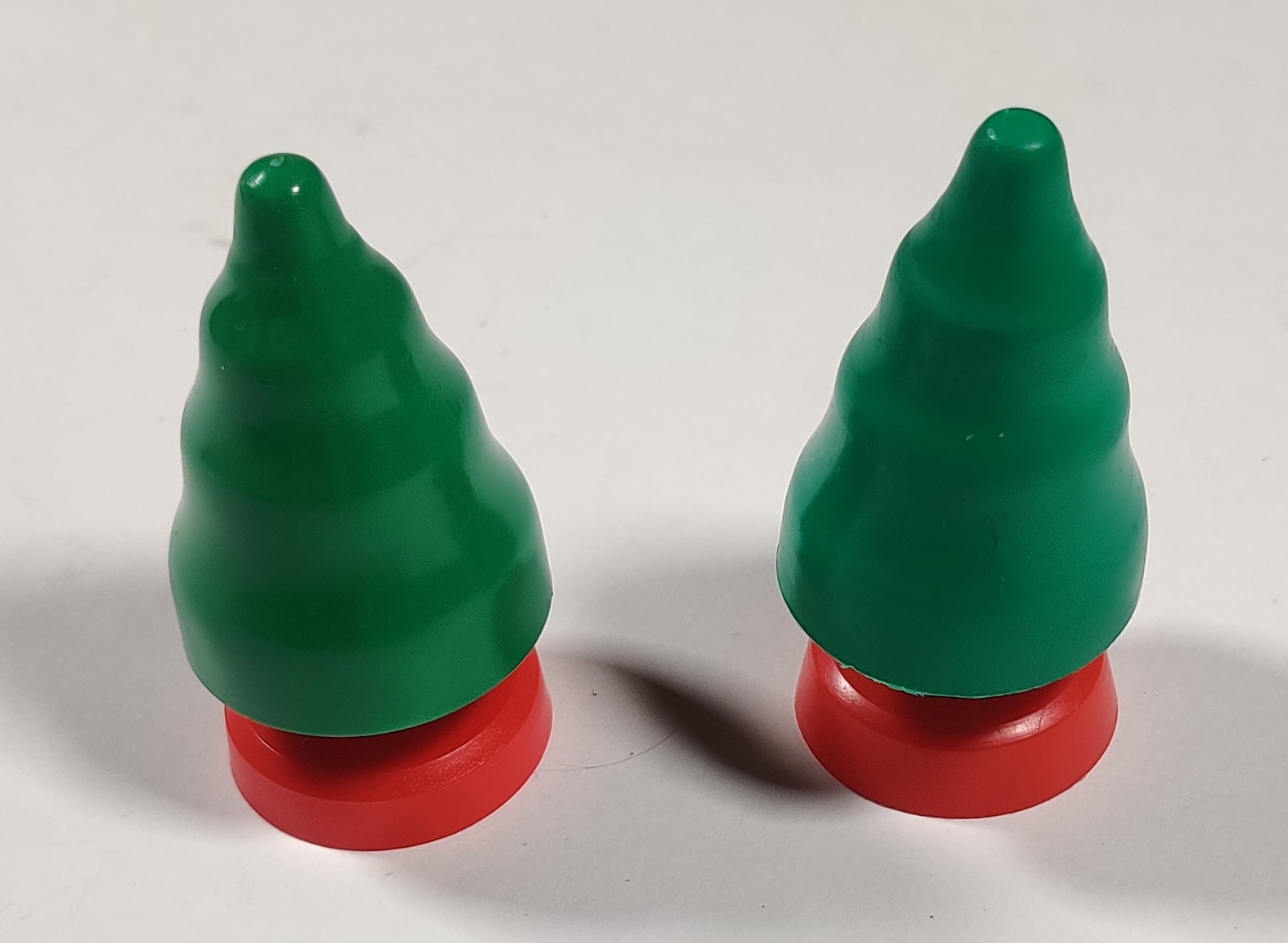
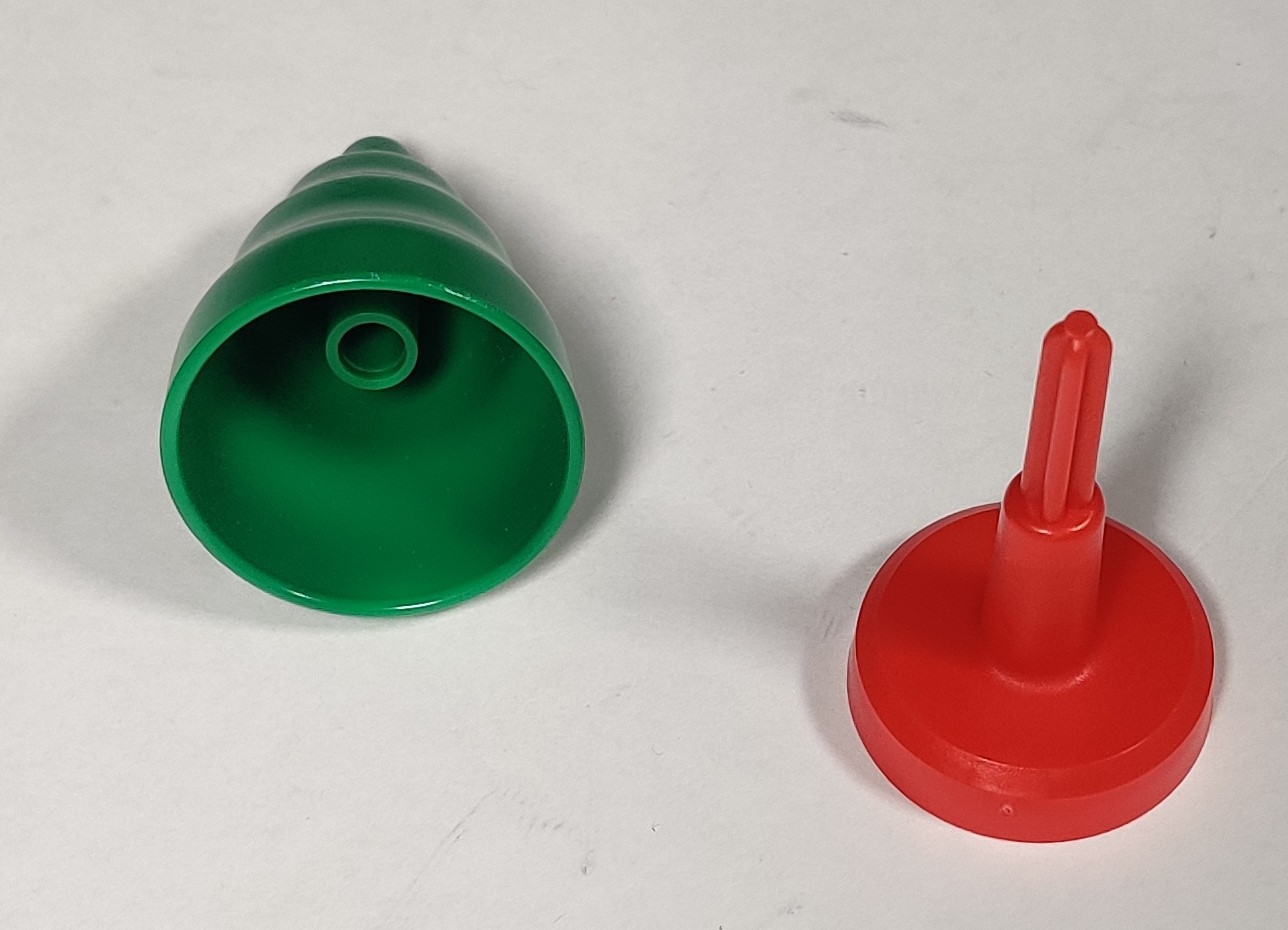
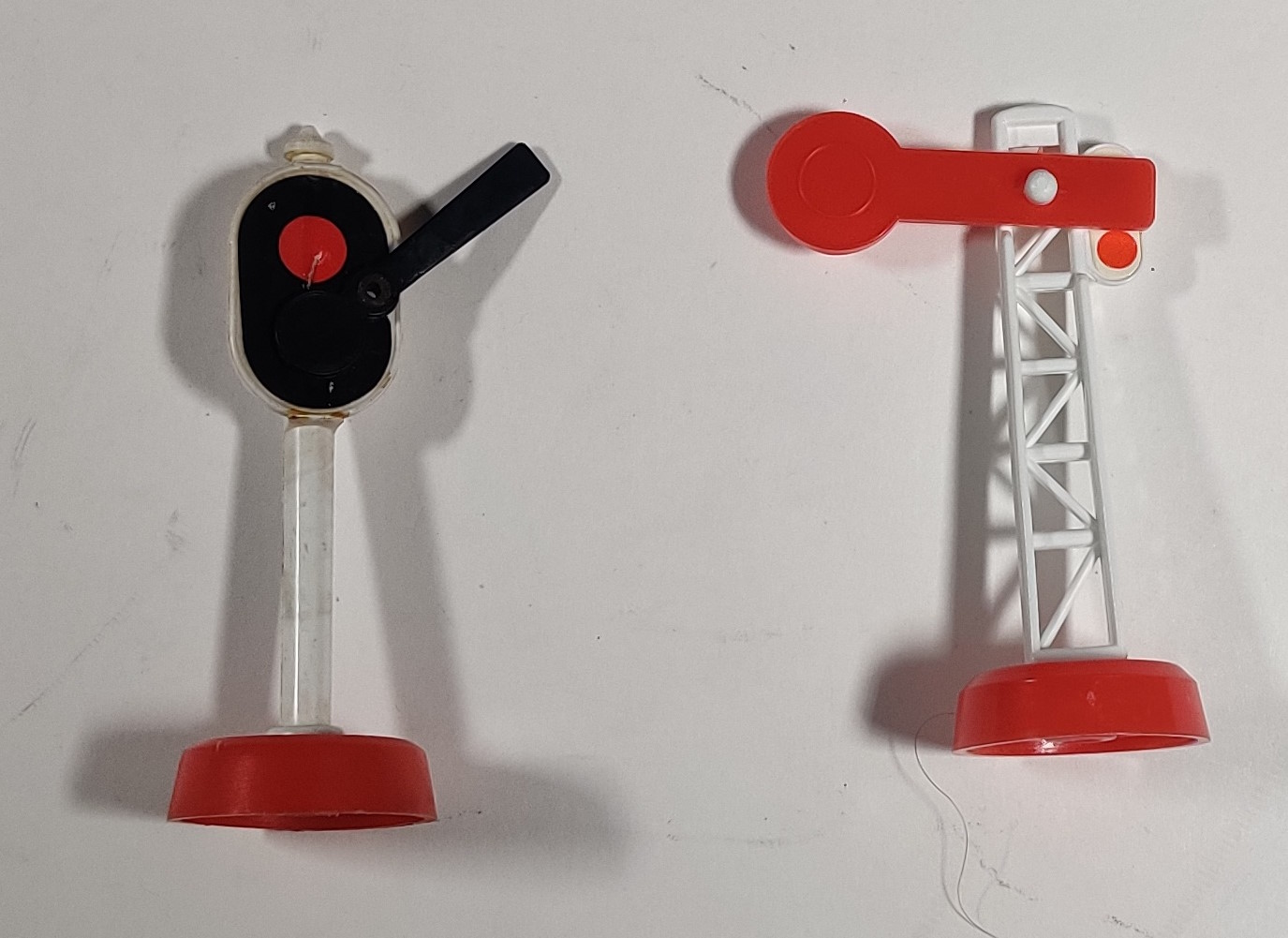
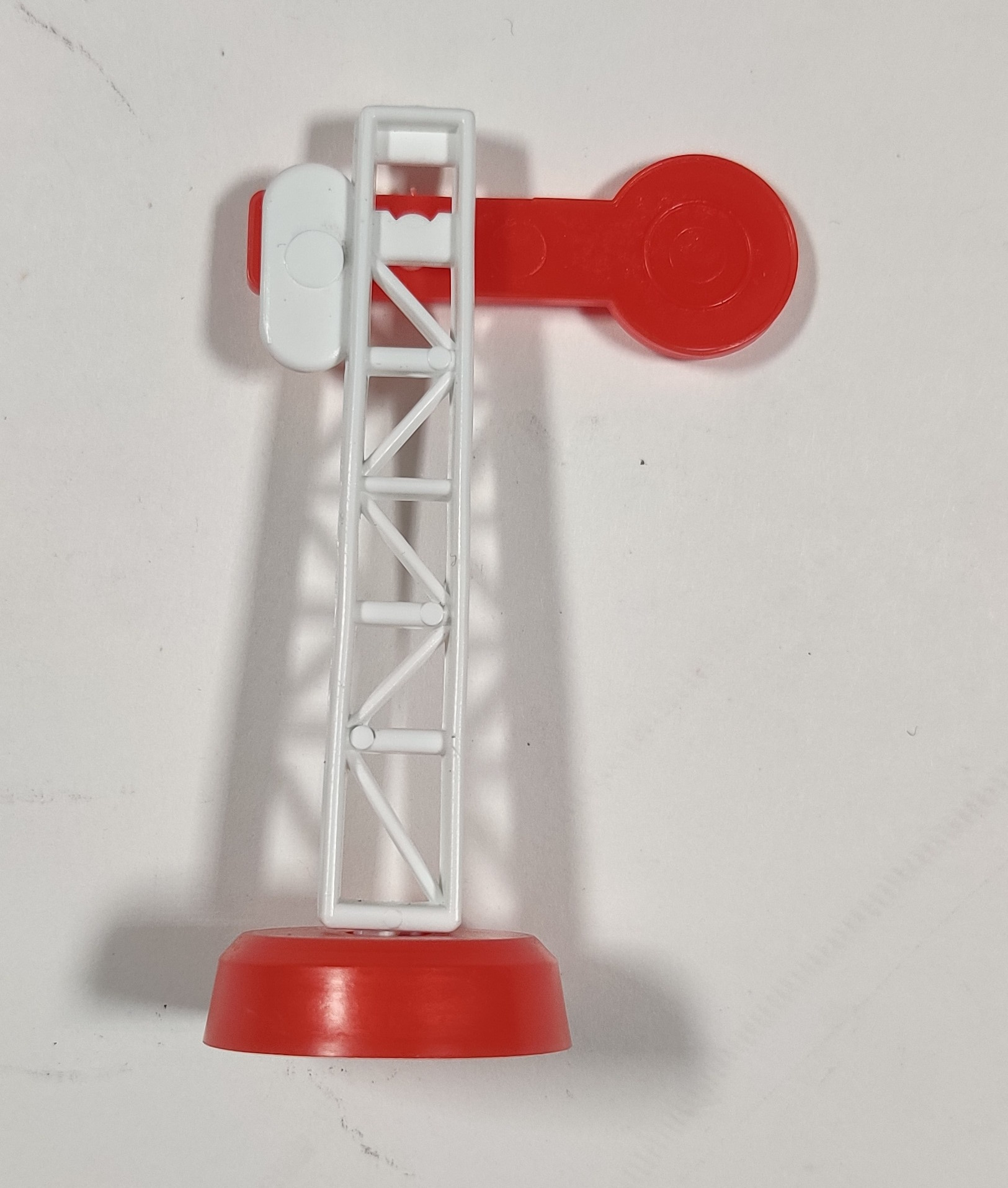
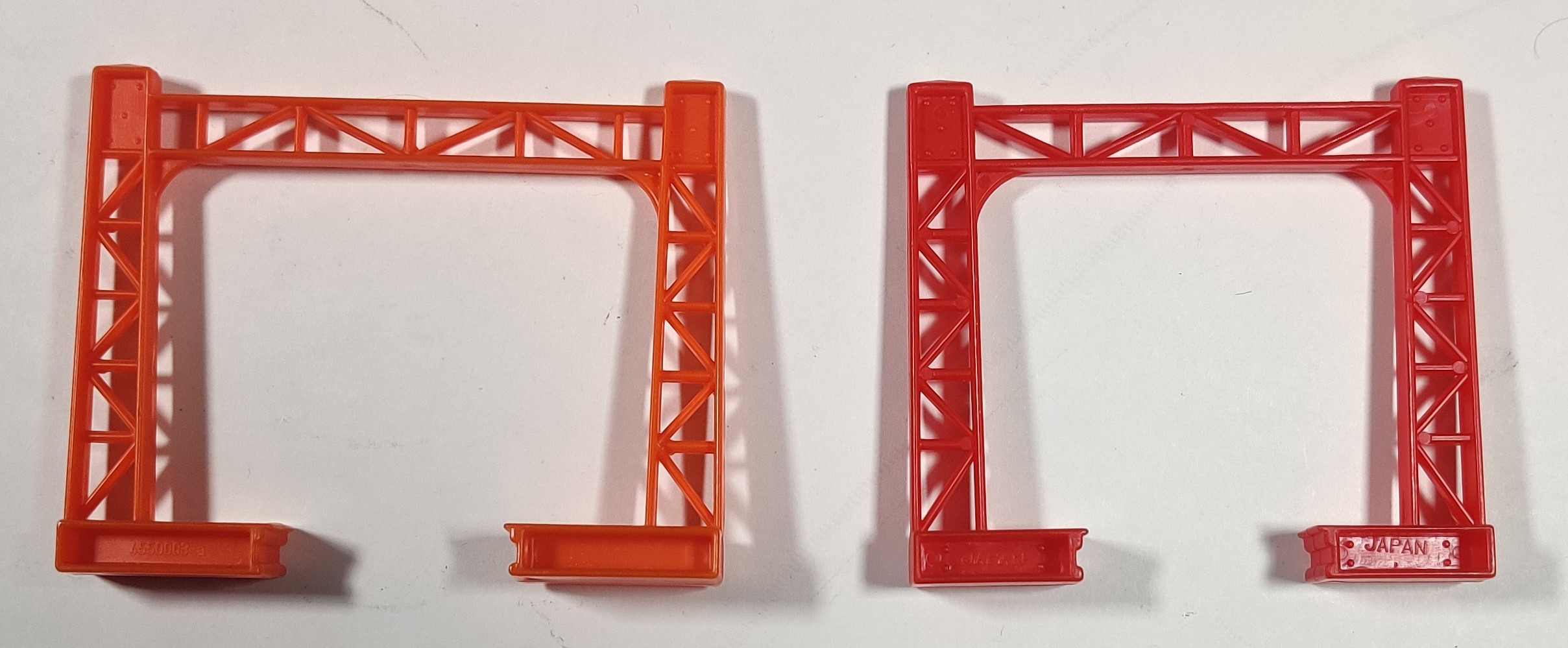
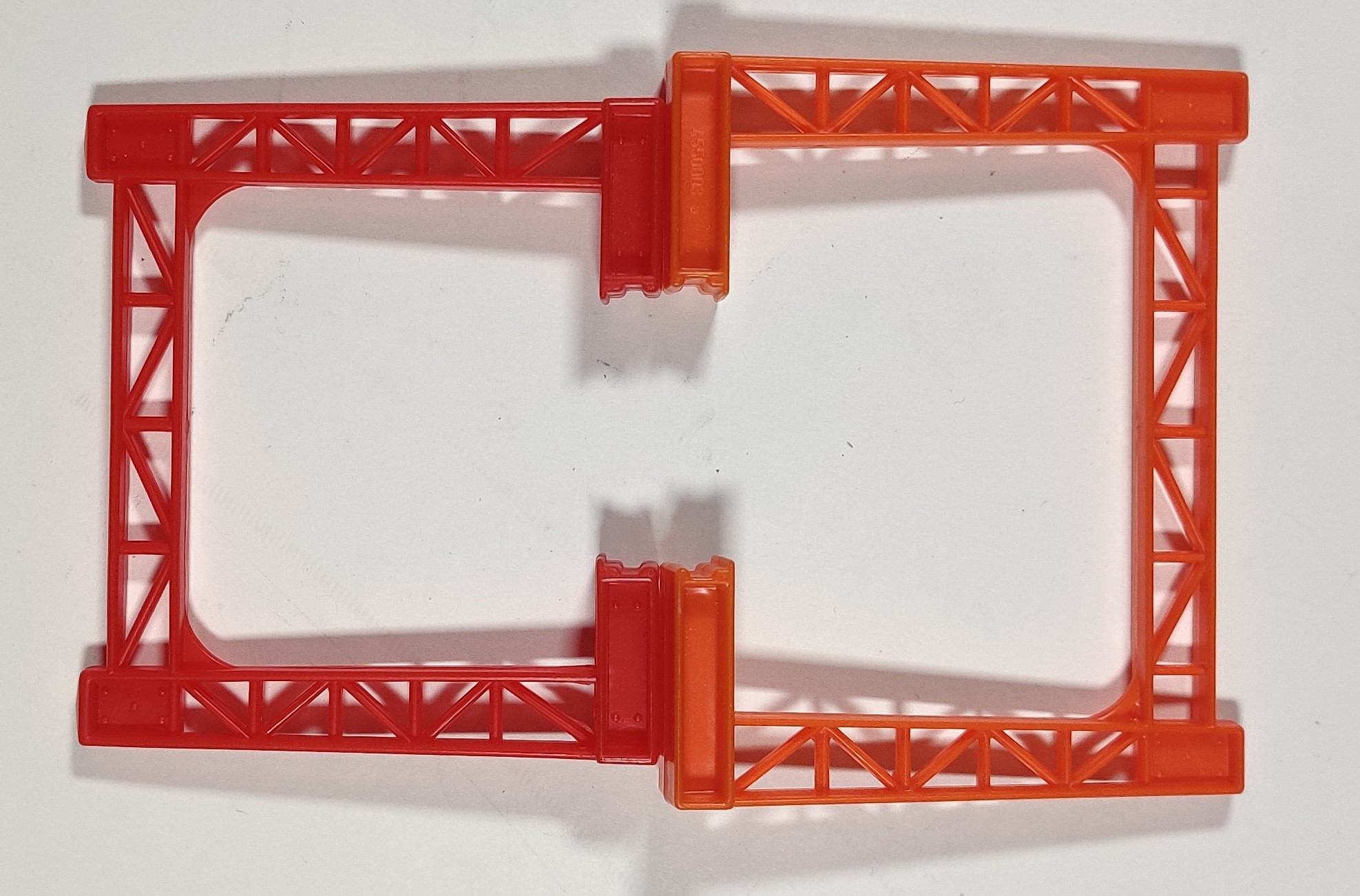
The standing tree, signal, and catenaries are all Stelco-made local specifications. Standing trees do not have a separate white stem and instead have the trunks molded directly into the red bases. Signals are a completely local design and are rather cool looking in my opinion. Catenaries are orange instead of red and stretch out slightly wider for whatever reason - perhaps worries about the somewhat odd longer Stelco rolling stock sideswiping catenaries as they pass on a curve?
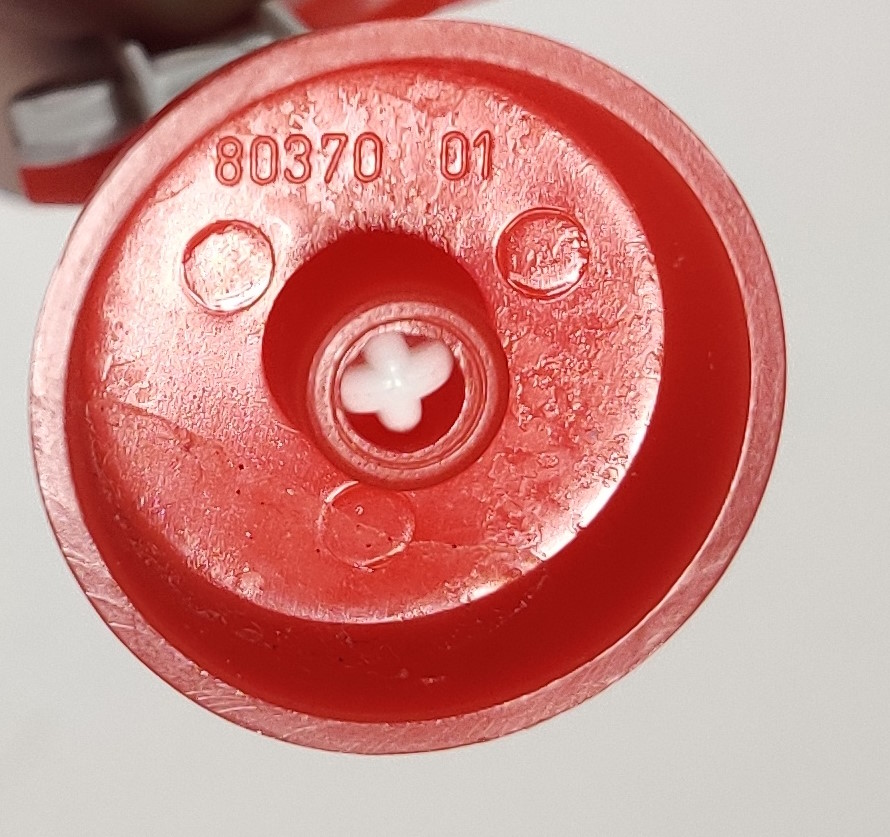
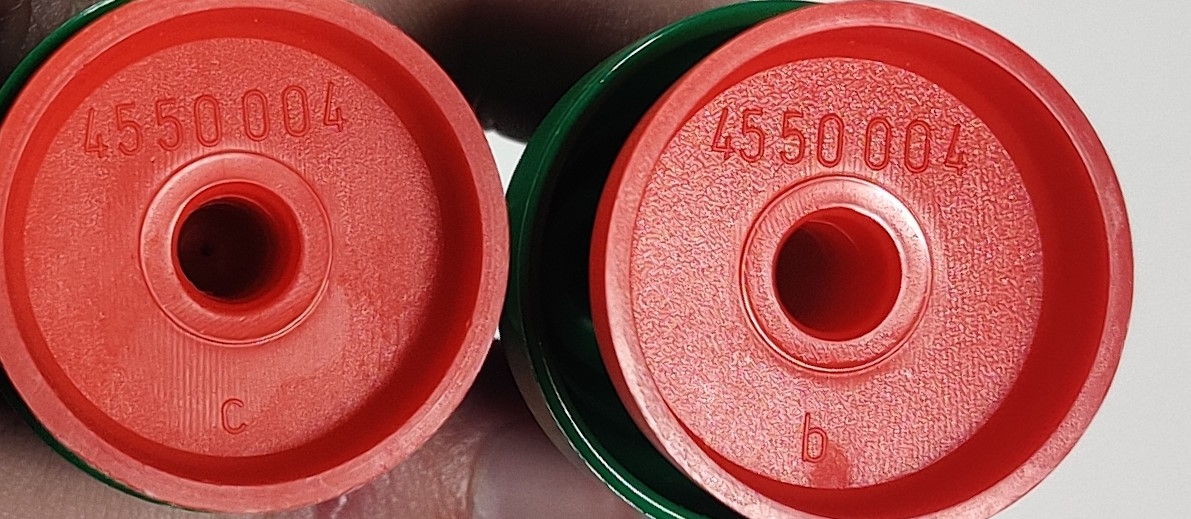
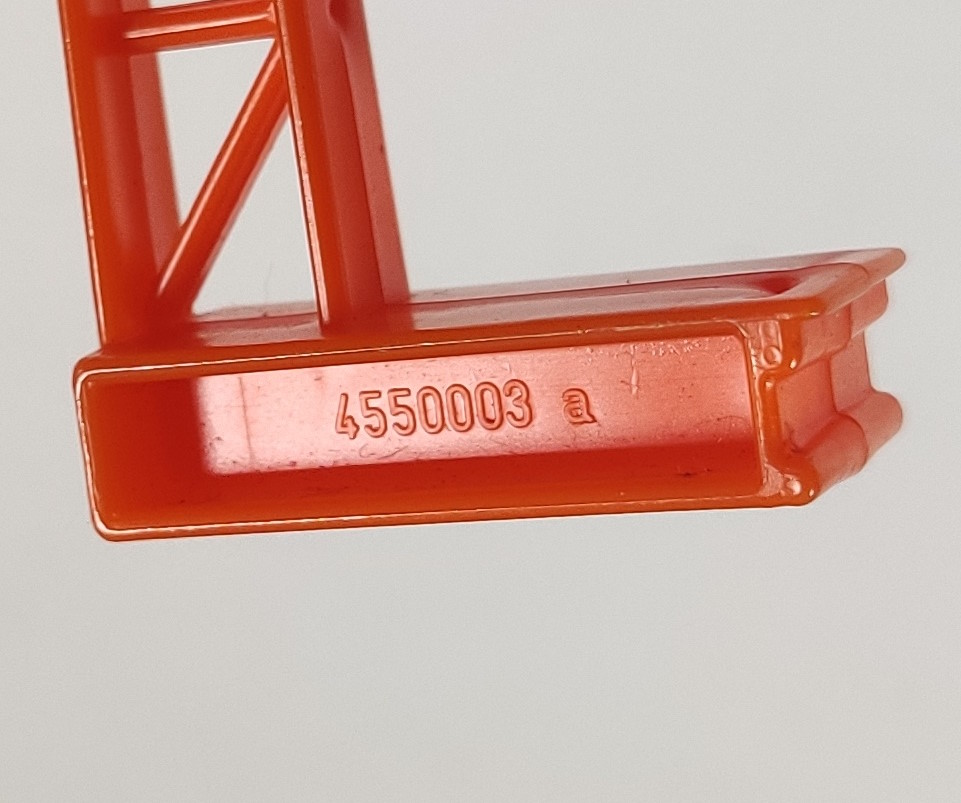
The bases for the trees and catenaries are marked with molding slot letters and part numbers sequential after the basic rail types. The signal base has a different style of production code.
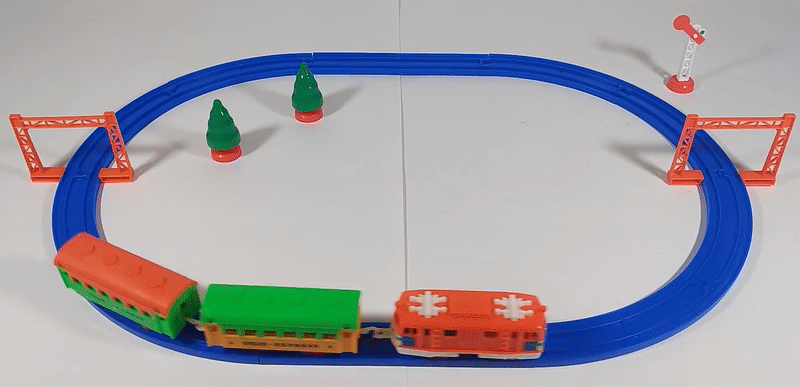
While I think the garish colors of the coaches are a bit of a mixed bag, I think the orange on the locomotive works nicely with the white chassis and pantographs and even the blue sticker. The Stelco signal is cool and the whole set is an interesting and odd footnote in Plarail and Tomy history.
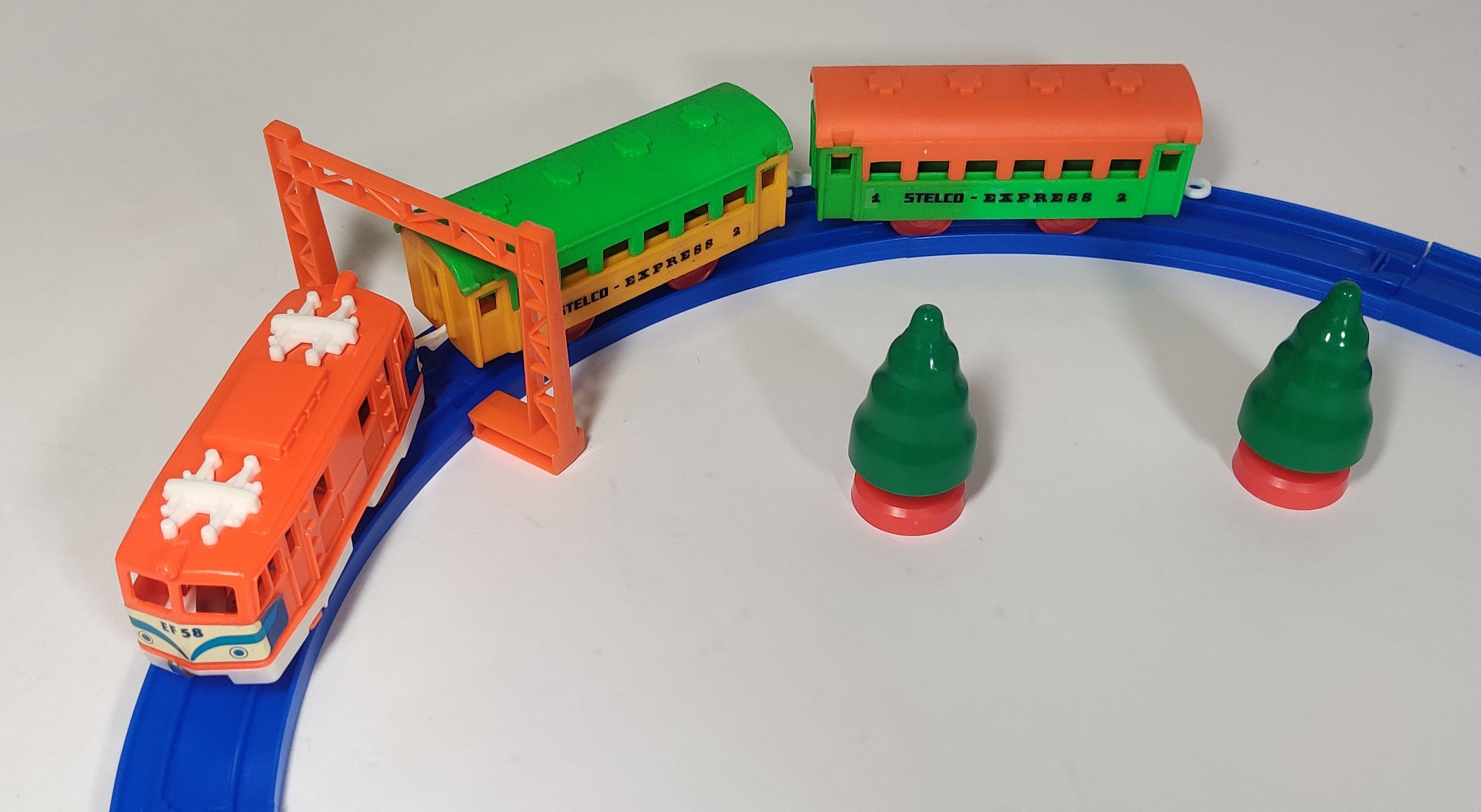
After replacing the traction tires and covering the original friction-drive gearbox output tires in a layer of heat-shrink tubing, the locomotive is running nicely.